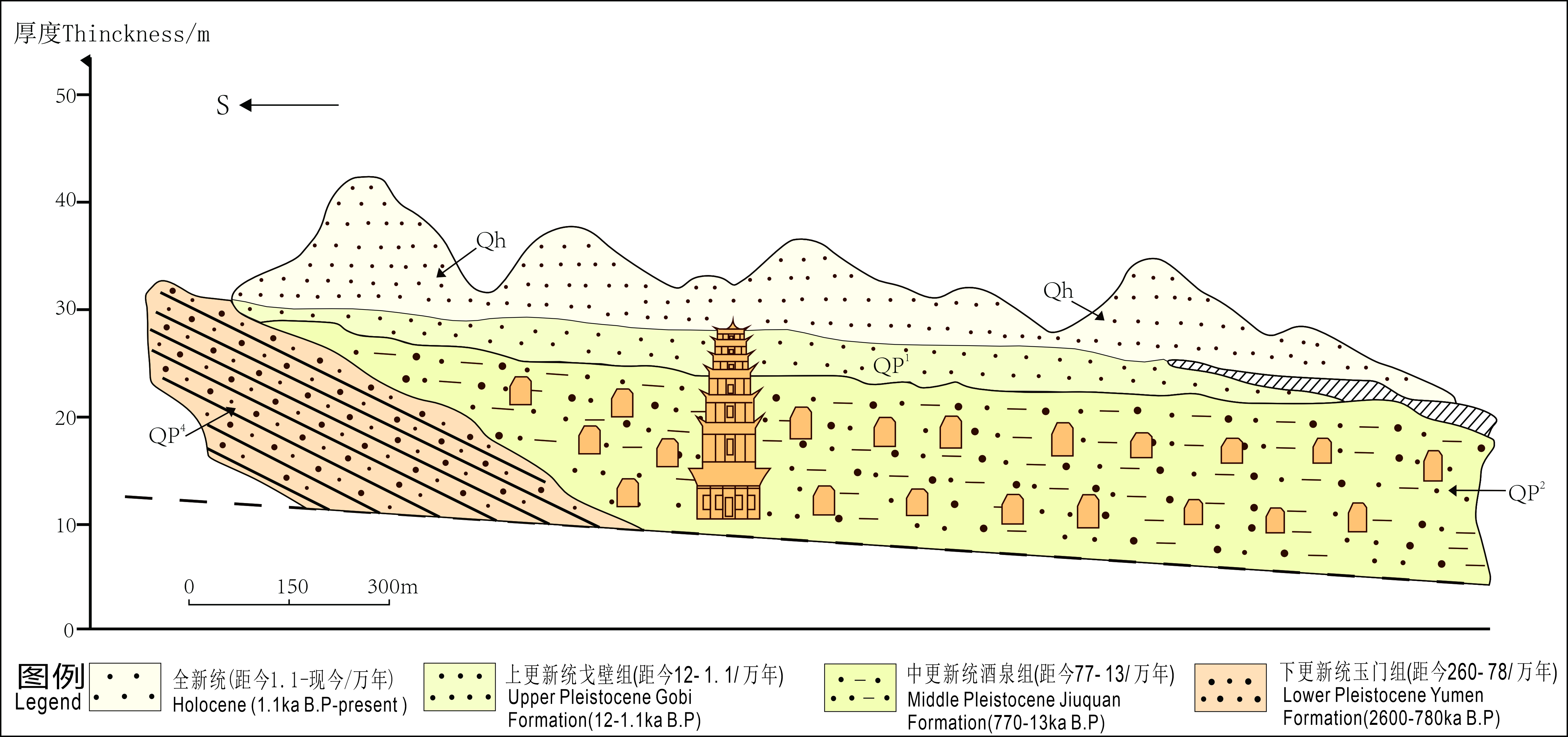The Mogao Grottoes, renowned worldwide for their cultural significance, are carved into the cliffs on the western bank of the Dangquan River. Spanning roughly 1,600 meters in length and standing at a towering height of approximately 25 meters, they currently contain 492 well-preserved caves that have housed invaluable cultural artifacts throughout history. However, around 200 out of these caves have fallen out of use. The strata where the Mogao Grottoes are built can be divided into three formations from the bottom up: the Yumen formation conglomerate formed by ice water and flood deposition in the Lower Pleistocene (about 2.6 million to 780,000 years ago), the Jiuquan formation semi-cemented conglomerate formed by the river and mountain torrent deposition in the Middle Pleistocene (about 770,000–130,000 years ago), and the Gobi sand and gravel formed by mountain torrent deposition in the Upper Pleistocene (about 120,000–11,000 years ago). The Mogao Grottoes, which hold great historical significance, were carved into the conglomerate stratum of the Jiuquan Formation. This layer is a thick and compact conglomerate cemented by calcareous and argillaceous materials, possessing stable engineering properties. Certain parts of this stratum are loose, which makes them ideal for excavation. The Mogao Grottoes' location is a testament to the remarkable intelligence of humanity. It serves as a prime example of how geoheritage and human history can seamlessly blend together.

 简体中文
简体中文
